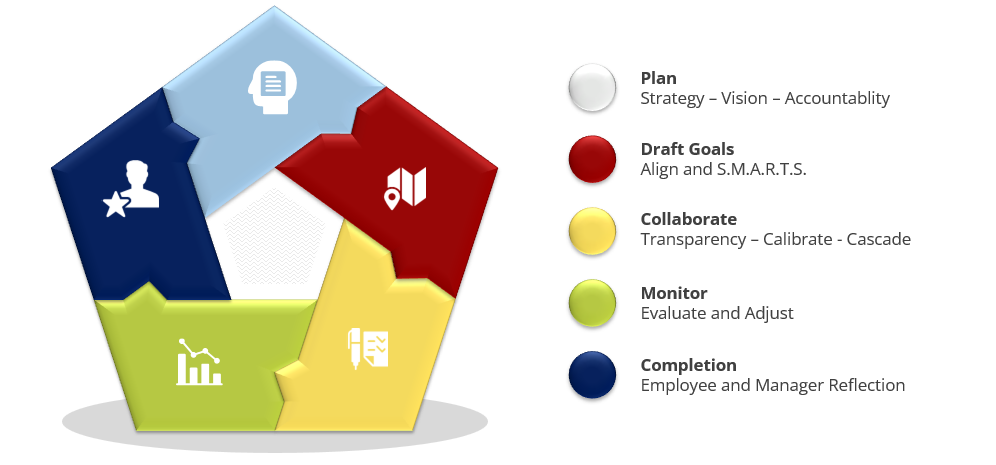Goal Setting for Managers

Welcome to the central hub for goal setting at PSOM. This resource is designed to help you set clear, focused goals that align individual contributions with our strategic priorities. Learn how to use goals to increase accountability, foster motivation, and drive team success.
Goal Setting for Managers Webinar
 You already have the right people. Let’s give them the right goals.
You already have the right people. Let’s give them the right goals.
This recorded webinar will help you:
-Set clear, focused goals that highlight each team member’s strengths
-Align individual contributions to PSOM’s broader strategic priorities
-Use the SMARTS framework to make goals actionable and measurable
-Simplify performance management in Workday with confidence
Enroll in the Goal Setting for Managers webinar
Performance Management Cycle
 The performance review cycle includes a mid-year and annual, or end-of-year, performance rating.
The performance review cycle includes a mid-year and annual, or end-of-year, performance rating.
Goal Setting Process

Step 1: Plan – Define your team’s strategy, vision, and key accountabilities.
Step 2: Draft Goals – Create SMARTS-aligned goals that support departmental and organizational priorities.
Step 3: Collaborate – Align and refine goals as a team, ensuring transparency and stakeholder buy-in.
Step 4: Monitor – Review goals regularly and adjust as priorities change.
Step 5: Evaluate – At year-end, assess and rate goals, core values, and leadership competencies.
SMARTS Objectives

When writing goals and expectations remember to use the SMARTS criteria. Goals and expectations should be:
- Specific – give details on the end results expected
- Measurable – outline measures that will be used to determine when a goal is met
- Achievable – must be a realistic expectation
- Results Oriented – goals and expectations should focus on the end results desired
- Time Bound – identify deadlines and milestones
- Stretch – some, but not all goals, may present a challenge to support professional development
Effective Performance Management
Goal Management

Here is our recommendation for the quantity of each goal per person as well as how each type of goal is defined and an example.
Resources
A centralized hub offering tip sheets and videos to assist staff and managers with performance reviews. Provides easy access to guidance materials for effective performance evaluations.
Provides resources and guidelines for effective performance management throughout the year. Assists managers in maintaining consistent performance oversight and development.
In this online course, participants will: understand the purpose of performance management, review Penn’s Performance Appraisal process, learn best practices for both staff and supervisors, and explore relevant resources. Helps staff and supervisors gain foundational knowledge of performance management, align with institutional practices, and apply actionable strategies for professional growth.
Defines observable and measurable skills and behaviors essential for workplace effectiveness. Helps in identifying key competencies for staff development and performance assessments.
A comprehensive framework used to evaluate performance, make hiring decisions, and identify development needs. Supports building a strong talent pipeline and aligning staff skills with organizational goals.
A guide detailing how to set performance goals and conduct check-ins within Workday. Facilitates structured goal-setting and regular performance discussions.
Outlines the annual performance review process for staff and supervisors using Workday tools. Ensures a standardized approach to annual evaluations and feedback.
Penn's strategic framework focusing on interdisciplinary collaboration and addressing global challenges. Aligns individual and departmental goals with the university's broader mission and values.

